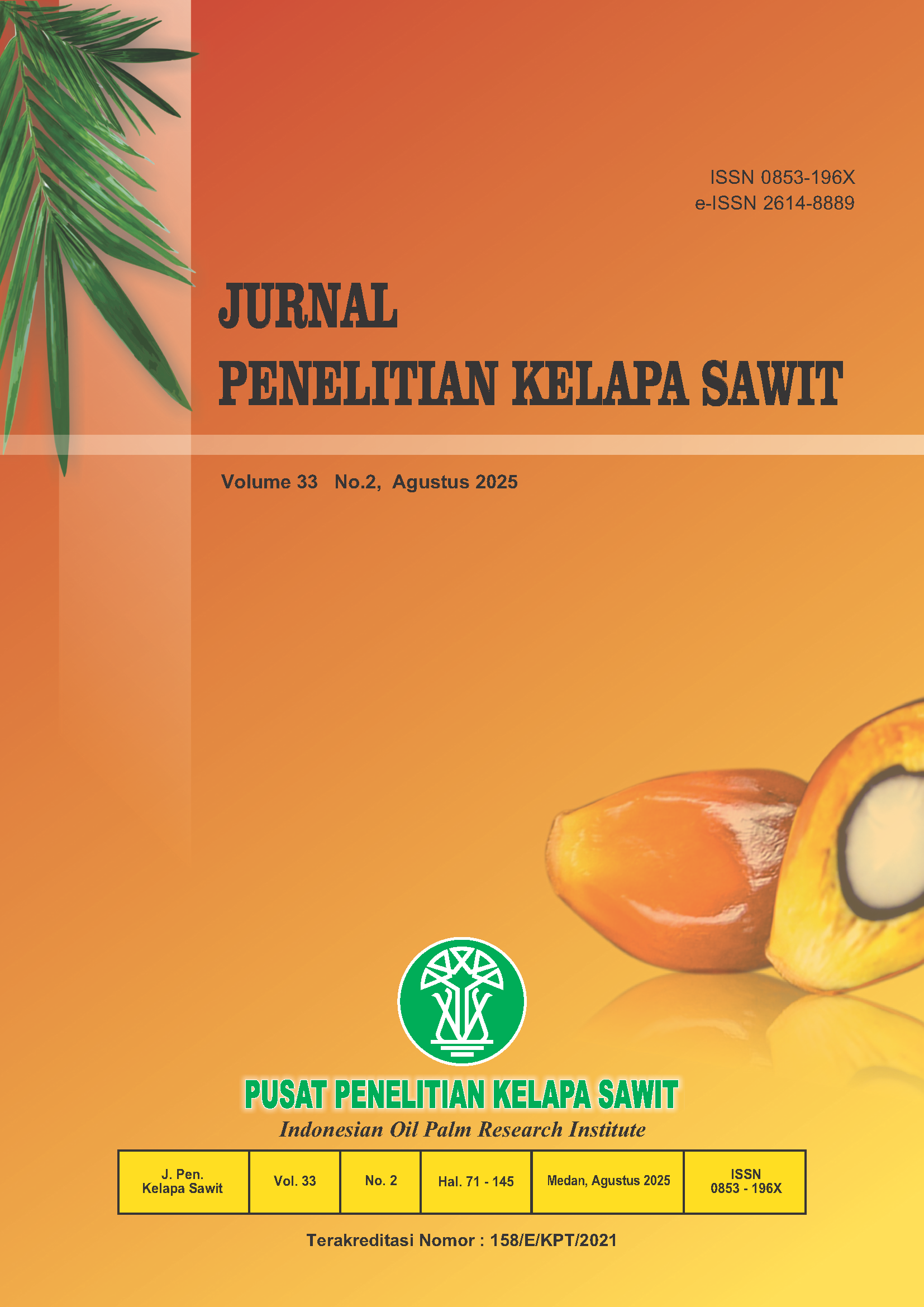Morphological Response of Oil Palm Seedlings to Fertilizer Application
Main Article Content
Abstract
Oil palm requires a balanced and sufficient supply of nutrients to achieve optimal results. Elements such as nitrogen (N) and potassium (K) are the most essential macronutrients needed by the plant. The cost of fertilizer application is relatively high, which presents opportunities and challenges in assembling plant materials that are efficient in nutrient utilization. This research aims to investigate the responses of various populations of oil palm plants to fertilizer application treatments. The study was organized using a split-split plot design with three factors: fertilizer type [nitrogen (N1) and potassium (N2)], fertilizer dosage [0% (P0), 100% (P1), 75% (P2), and 50% (P3) of the recommended dosage], and plant material [populations 1-6 (V1-V6)], repeated six times. The treatment with the highest average plant height was observed in P2, where the fertilizer was applied at 75% of the recommended dosage. In contrast, the best fertilizer type and dosage combination was obtained from N1:P2, referring to plants treated with 75% of the recommended nitrogen fertilizer. Regarding the populations used, population V1 exhibited the lowest average plant height, significantly differing from other populations. When considering populations, the average leaf count of populations V2 and V6 significantly differed from others and had the highest averages. However, when considering the interaction with fertilizer type, the N2V6 interaction involving population six treated with potassium fertilizer showed the highest average leaf count and significantly differed from other interactions. Regarding stem diameter, populations V3, V2, V4, and V6 had the largest average stem diameters and significantly differed from V5 and V1. The treatment combinations N2P2V6 (crossing six treated with 75% potassium fertilizer) and N1P3V2 (population two treated with 50% nitrogen fertilizer) had the largest average stem diameters, measuring 8.14 cm and 8.07 cm, respectively. Both significantly differed from the other 46 interactions. On the other hand, the smallest average stem diameter was found in plants with the N2P3V1 interaction, measuring 5.33 cm, and significantly differed from the other 47 interactions.
Downloads
Article Details

This work is licensed under a Creative Commons Attribution-ShareAlike 4.0 International License.
- Indonesian Journal of Oil Palm Research can be accessed freely by anyone (open access) to introduce more journals to the public.
- The results of the research can be used freely with the inclusion of Indonesian Journal of Oil Palm Research as a source of utilization.

